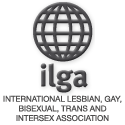A decade ago, New Delhi’s The Ashok turned away a dozen gay men who wanted to book a conference room at the hotel for a think-in on AIDS, which was still labelled a gay man’s disease. It took several phone calls from the senior bureaucracy at the Union Health Ministry’s National AIDS Control Organisation (NACO) to get them a 12×12 conference room for one day.
“Five years ago, the same group of men who have sex with men (MSMs, the politically correct term for homosexuals) organised a huge convention at The Ashok, with 700 MSM and transgender participants overrunning the hotel for days. Laws may not have changed in the courts or in the books, but the law in the streets has changed, and this amazing turnaround in society’s attitude has happened because of AIDS,” says JVR Prasada Rao, former Union health secretary and National AIDS Control Organisation (NACO) chief, who was appointed the UN Special Envoy for AIDS in the Asia Pacific region this week.
Change in social attitude is fantastic, no doubt, but it is not enough to keep new infection down. Legal environment around people most at risk — homosexuals, injecting drug users and sex workers — has to change to encourage them to seek HIV-prevention and treatment services that have been proven to cut down new infections dramatically, not just in India but everywhere around the world.
Last year, the HPTN052 study — HIV Prevention Trials Network’s study that was declared the Breakthrough of the Year 2011 by the journal Science — showed that if an HIV-positive person adheres to antiretroviral therapy (ART) used to treat AIDS, the risk of transmitting the virus to their uninfected sexual partner is reduced by 96%.
In March this year, the Africa Centre for Health and Population Studies reconfirmed the HPTN findings by presenting data showing that in areas where ART uptake is high (greater than 30%) people who do not have HIV are 38% less likely to get infected with the virus as compared to areas of low uptake (less than 10%). With 7.4 million on HIV treatment globally, new HIV infections have fallen in 33 countries since 2001, though mostly in Africa and Asia. UNAIDS credits the halving of India HIV-infected people to 2.39 million to both improved data collection methods and an actual fall in new infections because NACO provides 4.48 lakh people free anti-retroviral therapy (ART), which lowers the HIV load in the body and lowers the risk of infecting partners while helping the infected live
healthier and longer.
Monitoring risk
Men who have sex with men (MSMs) are 19.3 times more likely to be living with HIV than the general population, with some showing HIV prevalence rates up to 33%, shows UNAIDS data. “Punitive laws, policies and practices that are a hurdle in the AIDS response, which should protect, not punish people who need help,” says Prasada Rao, who is also the Commissioner Secretary of the Global Commission on HIV and the Law, set up to create a more supporting legal framework to eliminate HIV related stigma and discrimination. “The AIDS responses have to be based on scientific evidence, not ideology, to ensure they reach those most in need and most affected.”
India is among 79 countries criminalise same-sex relations between consenting adults, with six carrying a death penalty. In India, the Supreme Court’s final decision on whether Section 377 of the Indian Penal Code can continue to criminalise consensual gay sex between adults in private is awaited.
Countries also need to distinguish between drug trafficking and possession for personal use. “Injecting drug accounts for the majority of new infections not just Eastern Europe and central Asia, but also in north-east India and states such as Punjab and Haryana. “To finish the fight against AIDS, drug-users need to be treated as victims and encouraged to quit their addiction,” said Prasada Rao.
Staying on track
“India is a regional superpower and the decisions taken here impact other parts of the world. India has to formulate forward-looking policies — such as encouraging generics and fighting patents — not just for Asia but also Africa, where 90% ART drugs come from India.,” says Prasada Rao.
“With HIV data staying under 2.5 million for over 5 years, India, along with Thailand, Malaysia, Cambodia and Laos are the high-achievers in the Asia-Pacific, and we have to keep it that way,” he says. Philippines, Vietnam, Indonesia and Papua New Guinea have seen in a surge in infection. Globally, repressive states in Eastern Europe, Central Asia and the Middle-East are recording a surge in HIV infection, while infection is down in Africa and the Caribbean.
by Sanchita Sharma, Hindustan Times
Source – Hindustan Times







